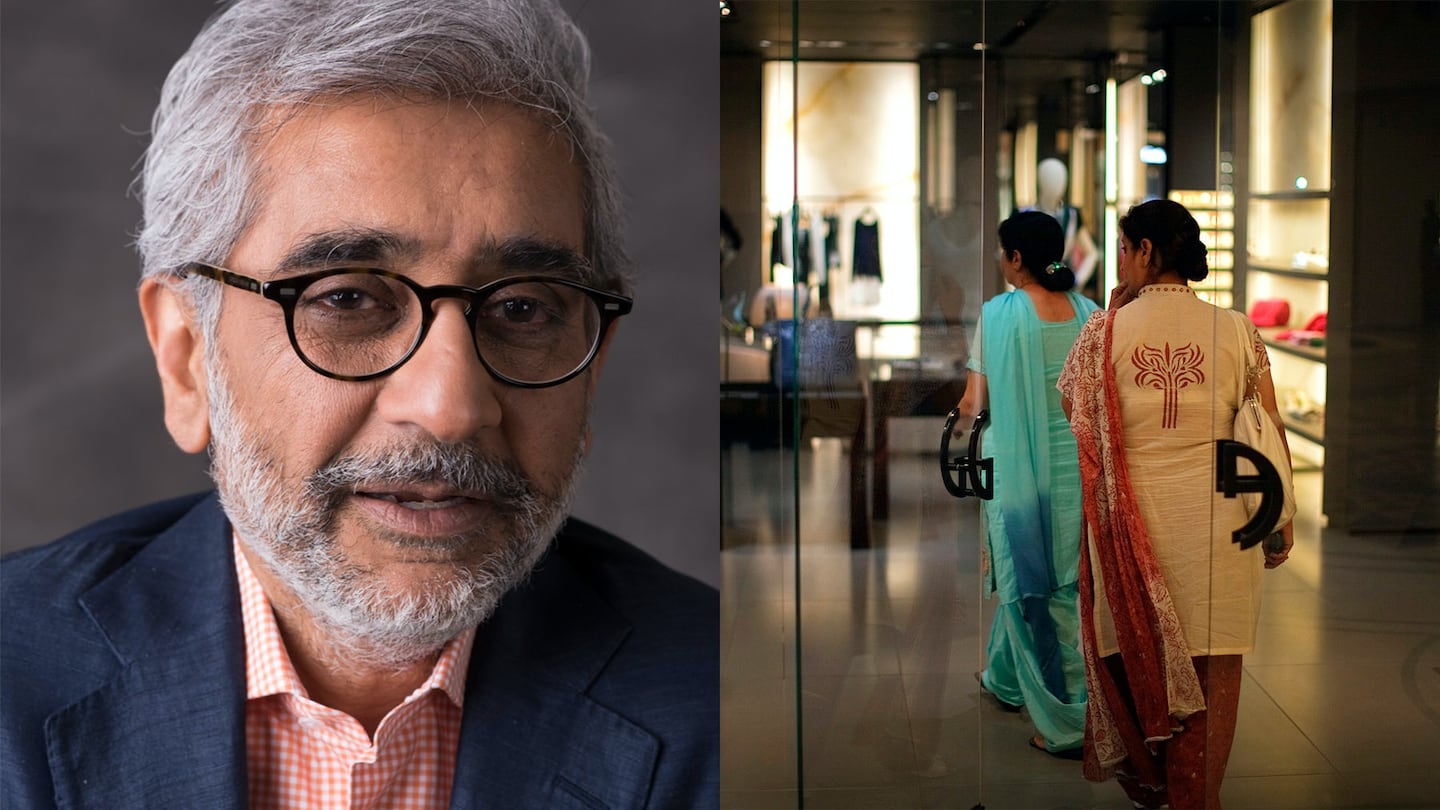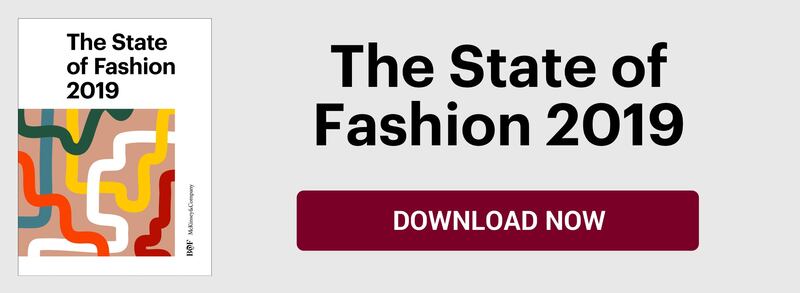
The Business of Fashion
Agenda-setting intelligence, analysis and advice for the global fashion community.

Agenda-setting intelligence, analysis and advice for the global fashion community.

This article appeared first in The State of Fashion 2019, an in-depth report on the global fashion industry, co-published by BoF and McKinsey & Company. To learn more and download a copy of the report, click here.
Darshan Mehta: Very upbeat. Last quarter our GDP grew 7.7 percent. So, we continue to retain the highest GDP growth in the world and everything prime minister Narendra Modi is doing — barring currency pressure — looks very good.
For a very long time, the Emporio Mall in Delhi became a bit of torch bearer of luxury [moving] out of five-star hotel lobbies into the mainstream consumer mindset. Ten years later we now have two fantastic luxury malls opening in Bombay so there is a whole new fantastic retail ecosystem. The Jio World Centre and Maker Maxity, both coming out within a kilometre distance to each other and Bandra Kurla Complex, are going to increase competition.
BoF: Indeed. One of the biggest challenges for fashion in India has been the lack of retail infrastructure. Is this changing? Could 2019 be a watershed year?
ADVERTISEMENT
DM: Absolutely, I think in the same way that 2008 was. In 2008, the Emporio Mall started but the challenge with the Emporio was that unfortunately it was the same year the terrorist attacks happened in Oberoi and the Taj Hotel in Bombay. It took away some of the wind from the sails but nonetheless the Emporio marked a bit of a turning point. I think 2019 is going to be similar, we are going to see a very big change. Quest Mall in Calcutta is doing well; Palladium Mall in Chennai, early days, but you can see the traction is building; in Saket [an upmarket suburb of Delhi], the DLF mall is going through a complete overhaul [and then you have the new Mumbai malls so] we are going to see quite a bit of activity.
BoF: Which categories or segments do you think will reap the most benefits?
DM: I think mid- to the high-end because there is natural progression upwards. It's what I call [going from] the hundred dollars to the thousands of dollars.
BoF: What we hear about most are the middle classes swelling resulting in a massive boost in more affordable fashion segments. Is it premature for us to expect the Indian middle classes to make a big impression in lower end brands?
DM: There are some categories where marketers and brands already reaped what we call the democratic dividend of the rich middle class. In a lot of these categories, individual players have worked very hard to create the [right] price-value equation. Fashion spending and trading up in the category should become a habit and it is, but I think the fashion industry overall has not done enough.
BoF: Despite the upbeat climate, India is still not an easy place to do business. What sort of pain-points worry you most?
DM: One of the biggest worries, which could become a substantial pain-point, is the forex situation. The economics of the Donald Trump government and their approach [to] trade wars [are another concern].
The second is the rise of oil prices, especially given that India produces negligible amounts of its own oil and is largely dependent on oil imports. This is [worsened by] a rupee-dollar exchange rate which has eroded by close to six to seven percent since the beginning of 2018. From a consumer [spending] point of view, it’s not always easy. You can either pass on the impact in volume shrink or you can have… deeper and more frequent discount on the product — both of which erode the margin.
ADVERTISEMENT
We're now looking at the first wave of first generation wealth, which spends very differently than inherited wealth.
The [other issue] is… the price value equation, which is getting substantially reset [due to the commoditisation of our sector by] the likes of Amazon and Flipkart. After the US, India is seen as possibly the next [market where this will happen], so that’s a worry.
BoF: Let’s talk more about that. There is so much dynamism happening in Indian e-commerce market; how bullish are you about e-commerce as an opportunity for a business like yours, which is skewed more toward luxury?
DM: Very bullish. We've created very clever software where all our stores' inventories are parallelly given digital exposure. Last year a significant portion of our brick-and-mortar sales [were driven by] online. It also doesn't [impair] the price-value equation because it is one inventory, one image and one price. For a place like India, which has pockets of wealth, I am able to have access to that because those pockets of wealth may still not be ready for a fully-fledged store, [but] the customers that exist in the town can still shop through my store.
BoF: Reliance recently upped its stake in Genesis Luxury Fashion, the Indian group that distributes brands like Bottega Veneta, Giorgio Armani, Michael Kors and Coach and has a joint venture with Burberry for the Indian market. Does Reliance have ambitions to become a luxury conglomerate along the lines of an Indian LVMH?
DM: We're certainly not trying to clone anyone else. When the Genesis opportunity came, we knew that they had a whole bunch of private equity players who were not so strategic in their approach. We saw a good opportunity when L Catterton wanted to exit and bought out all the other private equity players.
[Genesis Luxury founder] Sanjay Kapoor had created a good pool of talent, a good entrepreneurial ecosystem, some high-quality real estate, and a great brand portfolio, all of which sat well [with us]. We will never be predatory in nature, so having bought the first 40 percent [stake] our intention was to sit as a new partner along with Sanjay and his other partners to create more value.
BoF: Through Reliance’s direct partnerships with brands like Zegna, Diesel and Bally, you have daily contact with many Western luxury executives. Generally speaking, how good of an understanding do Western executives now have of the Indian luxury consumer?
DM: The singular mistake that they make is that the European mindset comes from a few centuries of inherited riches. In India we're now looking at the first wave of what I call first generation wealth, which spends very differently than inherited wealth. On the one hand, it is a very rich and powerful consumer movement because new wealth has an innate need to announce itself in many ways and fashion is clearly one of the ways. Yet, on the other hand, first generation wealth also has very sharp and recent memory of how that wealth was created and hence they spend differently because it is the wealth creator [himself or herself] who is spending it.
Second, because geographically we are juxtaposed to China, every time you look at India through the Chinese lens you will not see [the opportunity] correctly. India is a whole different ball game. In India, it is not about the traditionally rich Indians — they shop all over the world. It is about the 999 others who are the customers of tomorrow, who will find it too intimidating to go into the five-star hotel lobby or a gallery to shop there. So [former Burberry chief executive] Angela Ahrendts came and took the bold decision to set a Burberry opposite a Zara store [because] a woman coming out of the Zara store will feel less intimidated to go window shopping at the Burberry store.
This interview has been edited and condensed.

The Swiss watch sector’s slide appears to be more pronounced than the wider luxury slowdown, but industry insiders and analysts urge perspective.
The LVMH-linked firm is betting its $545 million stake in the Italian shoemaker will yield the double-digit returns private equity typically seeks.
The Coach owner’s results will provide another opportunity to stick up for its acquisition of rival Capri. And the Met Gala will do its best to ignore the TikTok ban and labour strife at Conde Nast.
The former CFDA president sat down with BoF founder and editor-in-chief Imran Amed to discuss his remarkable life and career and how big business has changed the fashion industry.